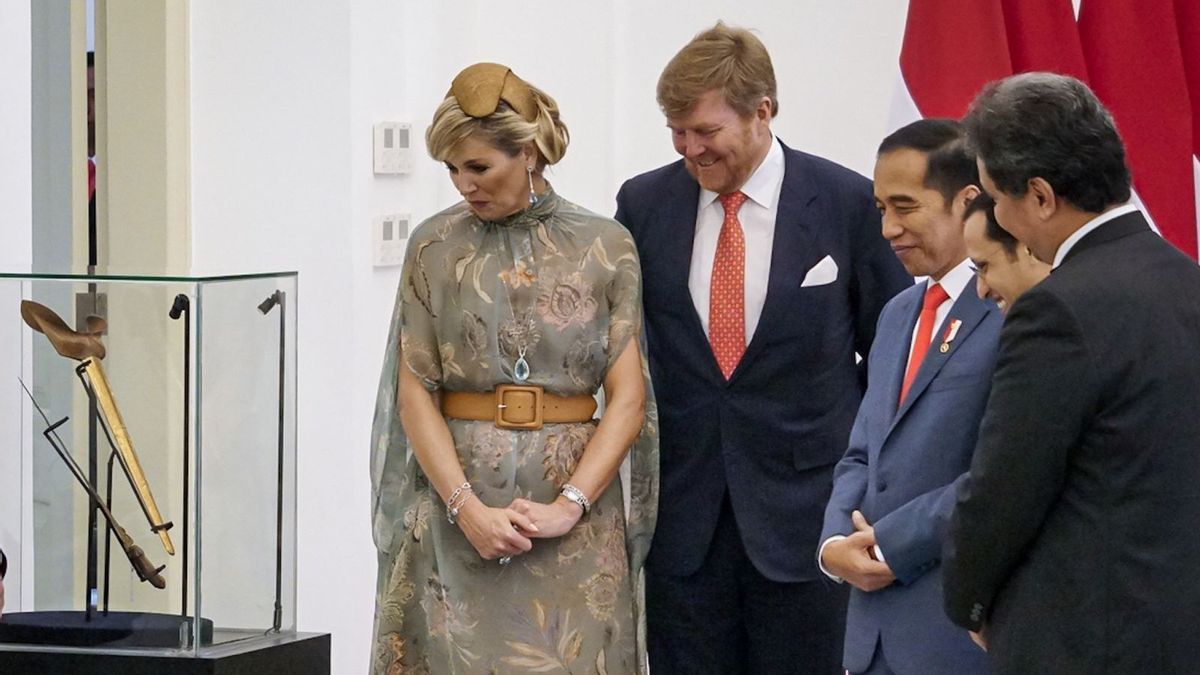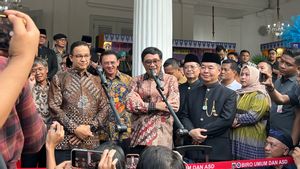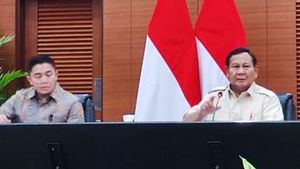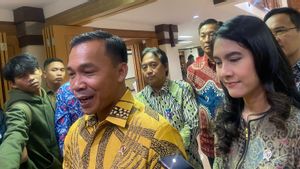JAKARTA - The keris belonging to Pangeran Diponegoro which is stored in the Volkenkunde Museum, Leiden, Netherlands, has finally returned to Indonesia. The keris was previously handed over by the Dutch Government to Indonesian Ambassador I Gusti Agung Wesaka Puja, before arriving at President Joko Widodo.
To find the keris belonging to Pangeran Diponegoro, a very in-depth study was needed, especially since the keris had been declared missing for hundreds of years. Now the heirloom belonging to Prince Diponegoro has officially returned to Indonesia and is on display at the Bogor Presidential Palace, West Java.
The grandson of President @jokowi Sedah Mirah Nasution was also present in welcoming YM Raja Willem-Alexander & YM Ratu Maxima, at the Bogor Presidential Palace, Tuesday (10/3). After taking a photo, the King & Queen of the Netherlands see the Keris of Pangeran Diponegoro which was handed over by the Dutch on March 3 2020 ago. pic.twitter.com/YVjp4pNFK9
- Cabinet Secretariat (@setkabgoid) March 10, 2020
Prince Diponegoro's keris is returned to Indonesia https://t.co/xLkRfoh4Wn pic.twitter.com/Ugmv58GJah
- Cabinet Secretariat (@setkabgoid) March 10, 2020
The keris is named Kyai Nogo Siluman. Previously, the Dutch got it during the arrest of Prince Diponegoro after the Java War which took place in 1825-1830. Colonel Jan-Baptist Cleerens gave the keris to King Willem I in 1831 as a gift.
Prince Diponegoro often carried Kyai Nogo Siluman everywhere, even during the war. Diponegoro also has a keris which is named Kyai Wiso Bintulu.
In the book Takdir Historian Pangeran Diponegoro 1785-1855, by historian Peter B Carey, Diponegoro often brought several other kris, namely the Kyai Abijoyo keris which was a gift from his father and the kyai Ageng Bondoyudo. When he died, Kyai Ageng Bondoyudo's keris was buried in the grave with Diponegoro.
In Indonesia itself, the keris is believed to be a heirloom that is stronger than the sword. Made from natural objects such as stone, steel, and high quality iron ore and all of these objects really come from nature, making a keris not just a weapon but an heirloom and giving added value to its owner
Quoted from Adiluhung Magazine, Preservation of Nusantara Culture, Edition 17, Wednesday, March 11, the keris was indeed a weapon of war in its time, but it does not mean a special tool for killing. In war, keris is used as a kendel or reinforcement.
This is what Prince Diponegoro did. He brought a heirloom keris to increase his confidence during the war. In fact this is true because the Dutch were often overwhelmed during the war.
Keris has a philosophical value, even the curves in the keris have its own meaning. No matter how many curves on the keris, it will have the same tip. So, all human actions in the world, both straight and twisted, finally acknowledge the existence of a power that is not owned by humans and is purely owned by the One, namely God.
Not only kris, Prince Diponegoro has another heirloom, namely a stick named Kanjeng Kyai Tjokro. The stick had previously been in the Netherlands and was kept at the Braud family's house from 1834 until it was returned to the Indonesians in 2015 during the 'Aku Diponegoro' exhibition.
Kanjeng Kiai Tjokro was the heirloom stick of Prince Diponegoro and finally returned to Indonesia. The stick has returned to its original home. The stick was a gift from the natives for Prince Diponegoro and was often carried when visiting holy places for pilgrimages and praying so that his activities would be blessed.
The stick of Kyai Tjokro was in the hands of Pangeran Adipati Notoprojo before Prince Diponegoro was captured in 1830. The stick of Kanjeng Kyai Tjokro was then handed over to the Governor General Jean Chretien Baud in 1834 with the aim of winning over the Dutch East Indies Government.
The English, Chinese, Japanese, Arabic, and French versions are automatically generated by the AI. So there may still be inaccuracies in translating, please always see Indonesian as our main language. (system supported by DigitalSiber.id)













